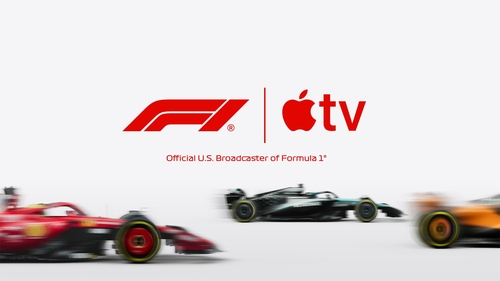Apple has won exclusive U.S. broadcast rights to Formula 1 for five years starting in 2026. It reportedly offered a record annual rights fee of about $140 million. This deal speeds up the race among streaming services for premium sports. However, it brings mixed effects: easier digital experiences for some fans, and higher subscription costs and access gaps for others.
Apple's exclusivity changes the sports broadcast landscape
The basics
Apple agreed to five years of exclusive U.S. F1 rights.
From 2026, AppleTV+ will be the only U.S. platform carrying Formula 1 races live. Reports say Apple topped rivals with an offer near $140 million a year, beating traditional broadcasters such as ESPN. Meanwhile, the outcome reflects how streaming platforms now play a decisive role in sports rights negotiations.
Importantly, this is more than a simple rights sale. Apple says it will tie race coverage into its broader apps—News, Maps, Music and others—to build richer F1-related content. This integrated strategy aims to grow subscribers and increase the time people spend inside Apple's ecosystem.

This deal could mark a turning point in sports media. As streaming rises, the value of live sports rights is being reassessed and platforms see live events as a way to attract paid subscribers. On the other hand, exclusivity raises concerns about cost and unequal access for viewers.
Shifting trends
Three forces combined to produce this outcome: F1's push into the U.S. market, aggressive streaming investments, and changes in how rights are sold globally. Historically, U.S. F1 coverage ran on cable and over‑the‑air channels, but digital transition has been underway for years. Meanwhile, this agreement stands out for its size and scope.
F1 aims to strengthen its finances by raising U.S. rights revenues to serve a growing American fan base (estimated in the tens of millions). Apple plans to do more than air races: it expects to create added value through its app network and platform features. Therefore, the deal sits at the intersection of sports business and platform strategy.
Arguments in favor
"A new viewing experience and growth opportunity."
Supporters view the contract as a positive blend of technology and premium content. Younger and digitally native fans welcome better mobile and online access. If Apple applies its engineering to broadcasts, viewers could see multi‑angle camera choices, real‑time data overlays, and even AR/VR experiments that change how races feel.
Moreover, this is not just a change of screens. Interactive tools that visualize race analytics or show teams' real-time strategy can deepen fan understanding and loyalty. In short, Apple's investment may pay off as long‑term platform value rather than a short, isolated cost.
From an economic view, investors and advertisers may also benefit. New subscribers to AppleTV+ could spend more inside the Apple environment, supporting broader business lines. F1 gains steadier revenue to support race operations and U.S. expansion plans.
Major concerns
Critics point to negative effects on consumers and legacy media. The most immediate worry is extra subscription cost. Many households already pay for multiple streaming services; adding AppleTV+ as the sole place to watch F1 increases financial burden.
Meanwhile, people in areas with weak internet or older viewers may be cut off. Traditional broadcast TV can reach viewers without high‑speed internet, but streaming exclusivity assumes robust connectivity. That digital divide (unequal internet access) risks turning race viewing into an unequal experience.
On competition, exclusivity concentrates rights and can weaken rivalry among platforms. High fees may push F1 further toward commercialization, which could raise ticket prices or increase ad load during broadcasts. Additionally, if Apple replaces long‑time commentators or changes production styles, fans who trusted legacy teams could be disappointed. If broadcast quality drops, viewers might unsubscribe.
Industry shockwaves
The landscape is rapidly rearranging.
The escalated rights fee will ripple across media and sports. It affects how other leagues negotiate rights and may force rivals to revise investment plans or seek new partnerships. In advertising and marketing, Apple’s choices—whether to include many ads, few ads, or targeted promotions—will shape how ad revenue flows across the market.
Regulators could also take an interest. Exclusive deals at this scale prompt questions about market dominance and public access. Antitrust concerns (rules that stop companies from becoming too powerful) and issues of media plurality may draw attention from policymakers.

At the same time, new business opportunities will emerge inside the industry. Data analytics, fan‑driven content, e‑commerce tied to merchandise, and live events integrated with streaming could all grow. Thus, this is not simply a rights transaction but a potential reshaping of the wider sports ecosystem.
Practical preparations
In practice, multiple measures are needed to limit harm. Apple could offer lower‑bandwidth streaming options, free highlight packages, or partnerships with free broadcasters to cover basic access. Meanwhile, pricing policies will be critical; subscription cost is the key factor in whether fans switch platforms.
To protect quality, Apple should collaborate with established commentators, invest in live broadcast technology, and build production teams that respect fans' expectations. If Apple fails to deliver high production standards quickly, viewer frustration will translate into subscription churn. Consistent user experience and deep content are both essential.
Finally, consider long‑term industry effects: Apple's large bet may spur rivals and leagues to double down on sports rights, eventually expanding consumer choice. However, in the short term, concrete steps are needed to offset higher costs and access problems.
Key takeaways
Apple's exclusive U.S. F1 deal symbolizes the digital shift in sports media. The alignment of platform investment and F1’s financial goals produced a deal that could transform how fans experience races.
However, clear downsides exist: subscription pressure, a digital access gap, and reduced market competition. Policy responses and responsible platform behavior will affect whether the overall outcome favors fans or simply increases costs.
In the end, this deal is a textbook case of opportunity and risk coexisting. Will it deliver a better fan experience and a stronger industry, or will it mainly raise costs and limit choice? What do you think will happen?